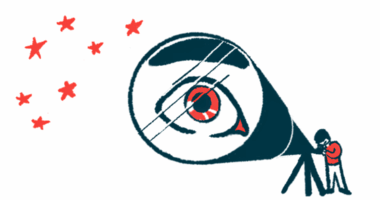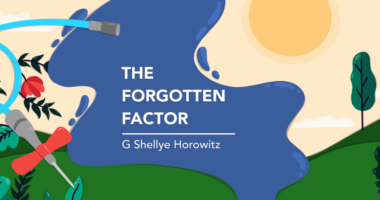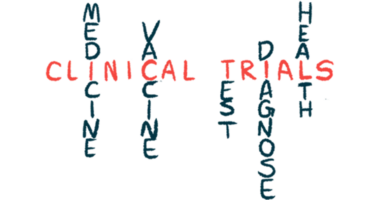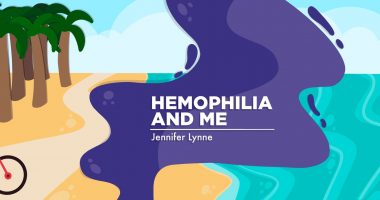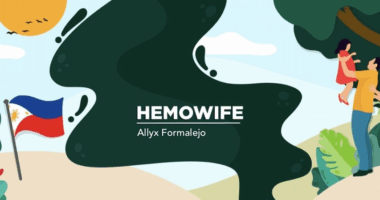Hemophilia B community support and resources
Last updated March 14, 2024, by Susie Strachan

By connecting with other people living with hemophilia B, you can find a community of people who understand what you’re going through and, when needed, share practical advice and emotional support.
Hemophilia B is a genetic bleeding disorder caused by a deficiency or lack of clotting factor IX. Clotting factors are proteins in the blood that help stop bleeding when a blood vessel is damaged. If injured, people with hemophilia B may have prolonged bleeding.
One great option is to join an in-person or online hemophilia B support group, which can provide an opportunity for you to learn more about your condition, get practical ideas about coping with the physical and emotional aspects of the disorder, and help lessen feelings of isolation.
For family members and caregivers of people with hemophilia B, support groups can be a place to share experiences, gain insights into caregiving, and receive emotional support from the hemophilia B community.
Support groups
Joining a hemophilia B support group allows you to connect with others who are having similar experiences and can provide a sense of camaraderie and understanding.
To find a support group focused on hemophilia B:
- speak with your healthcare team, as they may have recommendations
- check hemophilia treatment centers, which may have hemophilia B support groups or be able to suggest some options
- ask at conferences for bleeding disorders like hemophilia B, which often have information about support groups.
In the U.S. and Canada, people with hemophilia B can find local support groups through national organizations and other resources, including:
- Coalition for Hemophilia B
- National Bleeding Disorders Foundation
- Hemophilia Federation of America’s brotherhood group and sisterhood group
- Canadian Hemophilia Society.
International organizations also may be able to connect you with support groups, including:
Online support
Joining online communities and forums where people share their experiences can provide practical support and insights.
Social media posts aren’t just about promoting events for World Hemophilia Day. Posts can offer insight into the nitty-gritty of living with hemophilia B, such as symptom management, blood products, genetic research, and much more.
Platforms such as Hemophilia Nation and other hemophilia-dedicated social media groups can be a resource, and may help lead you to a hemophilia B community where you can connect with others who share your interests or have common demographics. For example, Hemo Girls Rock is a Twitter feed about women and hemophilia that brings together women with bleeding disorders.
Hemophilia News Today offers forums for discussion and can help you to connect with others who have hemophilia, including hemophilia B. There’s also a Facebook page on which news stories and columns are posted.
Information for people with hemophilia B
When searching for ways to educate yourself about hemophilia B, start with reputable organizations, respected healthcare providers, and creditable online resources. Reputable sources of medical information provide accurate and up-to-date information supported by scientific evidence and research.
The National Bleeding Disorders Foundation and the Hemophilia Federation of America in the U.S. both provide resources, educational materials, and support for people with bleeding disorders, including hemophilia B.
Hemophilia treatment centers in both the U.S. and Canada are specialized facilities that focus on the comprehensive care of people with bleeding disorders. These centers often provide educational materials, counseling, and support for people and their families in managing hemophilia B.
The Canadian Hemophilia Society also provides educational materials, support, and information on the condition and available hemophilia B resources.
Hemophilia News Today is a good source for the latest news and information about treatments, which includes a section devoted to hemophilia B.
Here, you can find information on a range of topics such as:
- navigating exercise and sports with hemophilia B
- tips for traveling with hemophilia B
- managing hemophilia B in the workplace
- hemophilia B and your diet
- personalized care for hemophilia B.
Financial resources
People living with hemophilia B and their families can face financial strain as they pay for medical bills and other healthcare costs. This is especially true should any accident or injury occur.
A 2021 study of adult men with hemophilia B in the U.S. found that, on average, their healthcare costs were 25% higher than men without the disease.
According to the National Bleeding Disorders Foundation, the typical annual cost for clotting factor therapies for someone with severe hemophilia is approximately $300,000. Additional medical costs may double that figure.
The Coalition for Hemophilia B offers an emergency patient assistance fund, while the Hemophilia Foundation of America offers three financial assistance programs, as well as education scholarships.
Pharmaceutical companies may have copay assistance programs for essential specialty medications that don’t have generic alternatives, including approved treatments for hemophilia.
There also are other assistance programs for financial aid:
- The Pan Foundation offers financial assistance to help people with serious illnesses pay out-of-pocket treatment costs.
- State Pharmacy Assistance Programs are available in many U.S. states to help eligible individuals pay for prescription medications.
Educational support
Conferences and symposiums that are open to the public — like the annual conference of the National Bleeding Disorders Foundation, to be held September 2024 in Atlanta — can be a valuable source of education and information. Such forums also can provide networking opportunities for people living with hemophilia B.
World Hemophilia Day, observed each year on April 17, also offers opportunities for education and advocacy. For example, the 2024 theme is “Equitable access for all,” reflecting a vision that “all people with inherited bleeding disorders have access to care, regardless of their type of bleeding disorder, gender, age, or where they live.” The various events offered are geared to the particular year’s theme.
Along with available webinars, podcasts also can be a source of information about hemophilia B. One podcast series, Bs in a Pod, focuses on scientific, technological, and clinical advances in hemophilia, and is hosted by Becky VanSant, whose daughter has hemophilia B.
Medical information
Hemophilia B education starts with your healthcare team, and may include getting information about its cause, diagnosis, symptoms, and treatment.
Building a good healthcare team for hemophilia B involves bringing together medical professionals who specialize in managing bleeding disorders, including:
- a hematologist with expertise in hemophilia B for diagnosis and treatment
- a nurse coordinator at a hemophilia treatment center who can coordinate treatment, and provide education
- a physical therapist to work on joint health, muscle strength, and mobility
- an orthopedic specialist for regular joint assessments
- a mental health counselor to address the emotional aspects of living with a chronic condition.
Always consult with your healthcare team about hemophilia B treatment options and whenever your symptoms change or worsen.
It is important to always seek the advice of a healthcare professional first. Online content is not a substitute for professional medical information.
Hemophilia News Today is strictly a news and information website about the disease. It does not provide medical advice, diagnosis or treatment. This content is not intended to be a substitute for professional medical advice, diagnosis, or treatment. Always seek the advice of your physician or other qualified health provider with any questions you may have regarding a medical condition. Never disregard professional medical advice or delay in seeking it because of something you have read on this website.
Recent Posts
- Doctors warn eye bleeding can be first sign of hemophilia A
- I’m still learning how to ask for help ahead of an important surgery
- Gene therapy can help reduce joint bleeds in hemophilia B: New data
- For women with hemophilia, progress is slow but tangible
- Managing hemophilia looks different now that we’re in our 30s
Related articles

